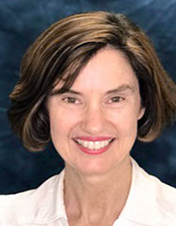O
Leisa Morton-Standish, PhD
Director of Elementary Education
create
ne of my good friends is a genius in Math. He runs a team of 100 actuaries in a major insurance company. He stated very coolly, as is his customary way of communicating, “companies used to come to us to solve their problems – now they are putting their problems online to be solved globally. The contract might go to us or it might just as easily go to a guy in India working from home on his laptop.”
Society has changed. Globally the way we do business has changed. Let’s take a dive into how our education system can change to harness the new reality of the workplace?
America’s edge has always been ingenuity, grit, independent thinking, and innovation. These are the attributes we need to explore.
Other countries facing these challenges might simply decide to create a national program to ensure their schools focus more on soft skills or create a national system of apprenticeships. For example, in Finland, teachers are no longer teaching by subjects. Instead, they are teaching by phenomenon: “Phenomenon teaching essentially combines different skills to teach a broad topic. For instance, a single lesson teaching geography, geology and languages might include asking students to identify various countries and discuss their climates all in French”.
Let’s think about today’s students: Are they passive consumers or problem-solving active creators? Learning is more than listening and parroting back to a teacher. In fact, very little content is retained in long-term memory unless students have constructed knowledge for themselves. American ingenuity has always been our calling card. How can we foster our students to be creative content creators, innovators, entrepreneurs, and thought leaders.
Author and professional trainer Sharon Bowman says that “Learning is fundamentally an act of creation, not the consumption of information.” Can our students create science, not just hear about it and repeat it back to the teacher? Can they write a book, not just parrot back its parts?
Many of our schools are focusing on design thinking, project-based learning, integrated learning, and inquiry-method across the curriculum. These four methods are some examples of providing more opportunities for true student creation than simply listening and repeating content.
Ellen White wrote a great deal about creativity, problem-solving and application, “In the study of figures the work should be made practical. Let every youth and every child be taught, not merely to solve imaginary problems, but to keep an accurate account of his own income and outgoes” (Education p. 238) and “Every youth should be taught the necessity and the power of application. Without application, the most brilliant talents avail little” (Education, p. 232).
Here are some ideas to ponder to create more and consume less:

What Our World Needs Now: Consumers or producers?
RESOURCE
Phenomenon Based Learning
Visit Website
1
Inspire Students to Create
It should be relevant to the content being explored and inspire creativity and curiosity–a gummy bear helix, a poem, a tableau, or a sketch.
Summer 2021
2
Abandon the Chalk and Talk
Talking the whole time–even if you stop to ask questions or divide students into discussion groups–will only allow students to passively consume. Creation should be a part of every class period.
3
Create for Others
Creating something to benefit other people can provide the motivation for students to delve into learning and application at the highest levels.
4
Keep it Practical
Psychological research does not support long content-based exams. Assess how well your students might apply what they’ve learned through real-world examples.
5
Ongoing Projects
Students can record their progress–visually, literally, orally. Students track their learning independently throughout the term.
6
Use interactive learning material
Use interactive features for learning like videos, animations, manipulatives, experiments, hands-on tasks, maker spaces, projects, design, performance and others.
7
Think Cross-disciplinary Approach
Apply science to art, art to science, poetry to math, and psychology to performance theater.
8
Build a Makerspace
Build a physical space where your students can learn and create together, integrating content-and-product-based activities as part of their instruction. Fill it up with recycled materials, toys to dismantle and repurpose from the secondhand store, free parts from local businesses and ask local electricians, plumbers, engineers, scientists to come and share their expertise.
9
Use the unfamiliar
Highlight the strange, unique, exotic aspects of your subject. Muse on the mysterious. Students will stop consuming–and start thinking–if they sense an unfamiliar concept.
10
Encourage risks and welcome mistakes
Every creative act is a risk. Learning from mistakes can come in many forms–wrong answers, misheard instructions, poorly understood concepts–but should always be recognized as natural, even beneficial.
“If our goal is to teach and nurture future scientists, artists, engineers, entrepreneurs we need to understand and nurture the creative potential because creativity has provided the foundation for art, science, philosophy, and technology,” says Dr. Rosa Aurora Chavez-Eakle, Founder and Director of Washington International Center for Creativity. “If we want to teach children to become productive human beings, and more satisfied with what they do with their lives, we need to support them in the process of discovering and enjoying their creative potential.”
References: